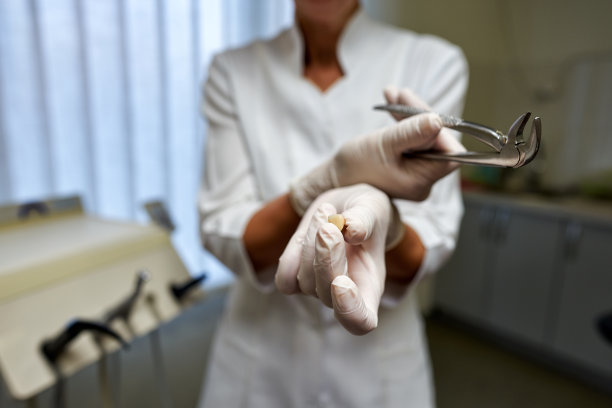A Comprehensive Guide to Extracting a Tooth Safely and Effectively for Optimal Oral Health
Summary: Extracting a tooth is an integral part of maintaining oral health, whether its due to decay, overcrowding, or other dental issues. This comprehensive guide delves into the necessary steps to safely and effectively extricate a tooth, ensuring minimal discomfort and optimal healing. The process covers vital pre-extraction assessments, the actual extraction procedure, post-extraction care, and the importance of follow-up visits to enhance recovery and prevent complications. Each section offers valuable insights for both patients and dental professionals, emphasizing the importance of a well-planned approach to tooth extraction.
1. Importance of Pre-Extraction Assessment

Before any tooth extraction takes place, a thorough pre-extraction assessment is vital. This includes a complete dental examination, where the dentist evaluates the tooths condition, surrounding tissues, and overall oral health. Understanding the reason behind the extraction helps in determining the most appropriate approach and technique.
Additionally, taking a detailed medical history is crucial. Factors such as allergies, existing health conditions, and medications can significantly influence the extraction process and patient recovery. For instance, patients on blood thinners may require special considerations during the procedure. Therefore, open communication between the patient and the dentist is paramount.
Imaging tests, such as X-rays, are often employed to visualize the tooths roots and surrounding structures. These images aid dentists in assessing the complexity of the extraction and preparing for possible complications. Ensuring all these steps are followed decreases the risk of adverse events during the procedure.
2. The Tooth Extraction Procedure Explained
The actual tooth extraction is usually conducted in the dentist’s office. It involves administering anesthesia to ensure the patient is comfortable throughout the procedure. The choice of anesthesia—local, sedation, or general—depends on the complexity of the extraction and the patients anxiety levels.
Once the anesthesia takes effect, the dentist carefully loosens the tooth from its socket using specialized tools. This process may involve sectioning the tooth or even cutting the surrounding gum tissue if the tooth is impacted. Precision is essential to minimize damage to adjacent teeth and tissues.
After the tooth has been successfully removed, any bleeding is controlled, and the site may be sutured if necessary. During this phase, the dentist will provide instructions on how to care for the extraction site, emphasizing the importance of avoiding complications such as dry socket.
3. Post-Extraction Care for Optimal Healing
Post-extraction care is crucial for ensuring swift recovery and reducing the risk of infections. The dentist typically provides specific guidelines which should be followed diligently. Initially, patients are advised to bite on a gauze pad for about 30 minutes to help control bleeding and promote blood clot formation.
Patients should also avoid strenuous activities and keep their head elevated to minimize swelling during the first 24 hours. Ice packs can be beneficial in alleviating discomfort and reducing inflammation. It’s essential to consume soft foods and maintain hydration while avoiding hot drinks and hard foods in the days following the extraction.
Observing the extraction site for any signs of infection, such as increased pain, swelling, or discharge, is vital. If these occur, follow-up with the dentist is critical. Additionally, patients should refrain from using straws, as the suction can dislodge the blood clot and lead to dry socket.
4. The Role of Follow-Up Visits in Recovery
Follow-up visits after tooth extraction are essential for monitoring the healing process. Dentists typically schedule a visit within a week post-extraction to check the site and ensure proper healing is occurring. This helps in identifying any complications at an early stage.
During these appointments, patients can discuss any ongoing concerns or unusual symptoms they may be experiencing. If complications arise, such as an infection or prolonged bleeding, the dentist can take necessary actions to address these issues swiftly.
Furthermore, follow-up visits provide an opportunity for dentists to offer guidance on restorative options, like dental implants or bridges, ensuring patients can maintain optimal oral function and aesthetics in the long term. These appointments highlight the importance of continuous dental care even after an extraction.
Summary: The thorough process of safely and effectively extracting a tooth is centered around careful pre-extraction assessments, a well-executed procedure, diligent post-extraction care, and necessary follow-up visits. Each stage is critical in ensuring that patients experience minimal discomfort and optimal healing.
This holistic approach not only addresses immediate dental needs but also sets the foundation for long-term oral health. Thus, understanding tooth extraction from multiple perspectives is essential for both patients and dental professionals.
This article is compiled by Vickong Dental and the content is for reference only.


